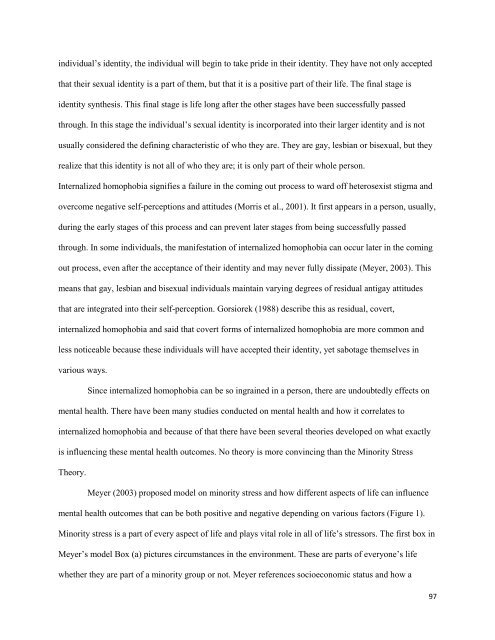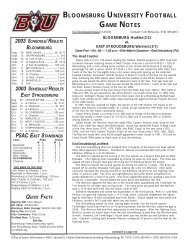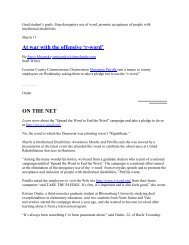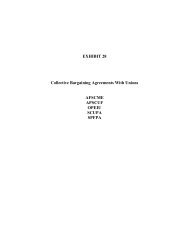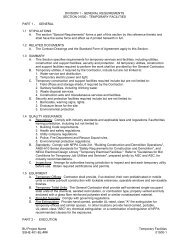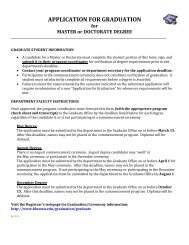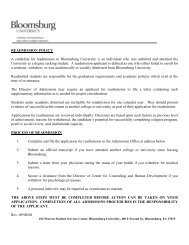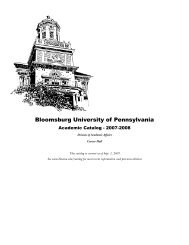Human Rights at Home and Abroad: Past, Present, and Future
Human Rights at Home and Abroad: Past, Present, and Future
Human Rights at Home and Abroad: Past, Present, and Future
Create successful ePaper yourself
Turn your PDF publications into a flip-book with our unique Google optimized e-Paper software.
individual‘s identity, the individual will begin to take pride in their identity. They have not only accepted<br />
th<strong>at</strong> their sexual identity is a part of them, but th<strong>at</strong> it is a positive part of their life. The final stage is<br />
identity synthesis. This final stage is life long after the other stages have been successfully passed<br />
through. In this stage the individual‘s sexual identity is incorpor<strong>at</strong>ed into their larger identity <strong>and</strong> is not<br />
usually considered the defining characteristic of who they are. They are gay, lesbian or bisexual, but they<br />
realize th<strong>at</strong> this identity is not all of who they are; it is only part of their whole person.<br />
Internalized homophobia signifies a failure in the coming out process to ward off heterosexist stigma <strong>and</strong><br />
overcome neg<strong>at</strong>ive self-perceptions <strong>and</strong> <strong>at</strong>titudes (Morris et al., 2001). It first appears in a person, usually,<br />
during the early stages of this process <strong>and</strong> can prevent l<strong>at</strong>er stages from being successfully passed<br />
through. In some individuals, the manifest<strong>at</strong>ion of internalized homophobia can occur l<strong>at</strong>er in the coming<br />
out process, even after the acceptance of their identity <strong>and</strong> may never fully dissip<strong>at</strong>e (Meyer, 2003). This<br />
means th<strong>at</strong> gay, lesbian <strong>and</strong> bisexual individuals maintain varying degrees of residual antigay <strong>at</strong>titudes<br />
th<strong>at</strong> are integr<strong>at</strong>ed into their self-perception. Gorsiorek (1988) describe this as residual, covert,<br />
internalized homophobia <strong>and</strong> said th<strong>at</strong> covert forms of internalized homophobia are more common <strong>and</strong><br />
less noticeable because these individuals will have accepted their identity, yet sabotage themselves in<br />
various ways.<br />
Since internalized homophobia can be so ingrained in a person, there are undoubtedly effects on<br />
mental health. There have been many studies conducted on mental health <strong>and</strong> how it correl<strong>at</strong>es to<br />
internalized homophobia <strong>and</strong> because of th<strong>at</strong> there have been several theories developed on wh<strong>at</strong> exactly<br />
is influencing these mental health outcomes. No theory is more convincing than the Minority Stress<br />
Theory.<br />
Meyer (2003) proposed model on minority stress <strong>and</strong> how different aspects of life can influence<br />
mental health outcomes th<strong>at</strong> can be both positive <strong>and</strong> neg<strong>at</strong>ive depending on various factors (Figure 1).<br />
Minority stress is a part of every aspect of life <strong>and</strong> plays vital role in all of life‘s stressors. The first box in<br />
Meyer‘s model Box (a) pictures circumstances in the environment. These are parts of everyone‘s life<br />
whether they are part of a minority group or not. Meyer references socioeconomic st<strong>at</strong>us <strong>and</strong> how a<br />
97


